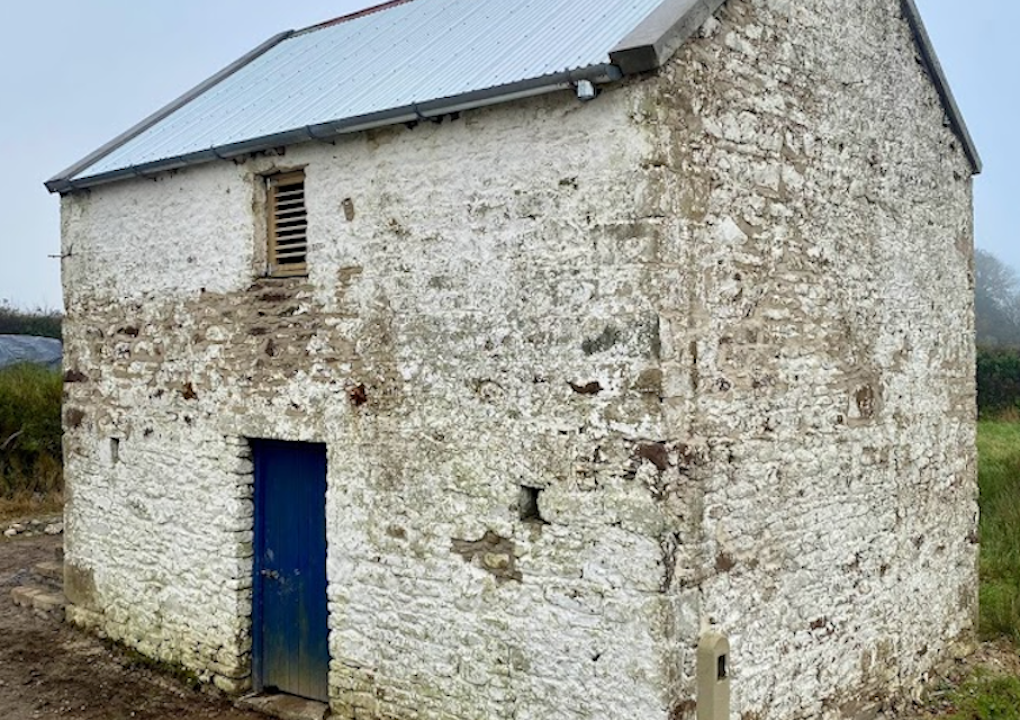Three generations of the McGuinn family in Gurteen, Co. Sligo, were involved in one form or other in the repair of a traditional granary on the family farm, constructed between 1847 and 1888, as part of the Traditional Farm Buildings Grant Scheme run by the Heritage Council and the Department of Agriculture, Food and the Marine (DAFM).
The two storey building was constructed of stone and lime mortar with a corrugated iron roof.
According to Patrick McGuinn: “It was in reasonably good condition but was descending into dilapidation, with works required. It had been used for housing cattle; chickens; donkeys; horses; pigs, along with the storage of equipment and feed.”
The granary is situated on a small suckler farm in Co. Sligo, which participates in the Agri Climate Rural Environment Scheme (ACRES), and is in the process of modernisation.
In 2022, a slatted shed was constructed. The granary project was seen as an important project by the family to conserve some traditional aspects of the farm for future generations.
It was a real family affair. “My brother, John, did the bulk of the physical work, followed by our father, Raymond. I put together the idea of doing the project and associated paperwork. I also helped out with the restoration,” Patrick said.
Patrick’s eight-year-old nephew Noah, kept the family motivated: “He lifted the spirits more than anything else.”

“The building was shortlisted in May 2023, subject to conditions. One of the conditions was to submit a conservation method statement which was carried out by Áine Doyle, a conservation consultant, in June 2023. This set out conservation specifications, minimum repairs and costs to demonstrate minimum intervention,” Patrick said.
In July 2023, a bat and bird survey was carried out by Barbara McInerney of Wild on Foot Ecological Services. “This found the building and surroundings a rich habitat for bat and bird species. A high-level of swallow activity and nests was located in the building.
“Other bird species noted in the survey were: goldcrest; goldfinches; grasshopper warbler; robin; song thrush; stonechat and wren. Three species of bat were noted in the survey, soprano pipistrelle, common Pipistrelle and myotis bat. The myotis bat was observed roosted in a wall plate.
“Several recommendations had to be taken to minimise disturbance such as waiting for the last swallow brood to fledge, and to hold off roof works until the first cold snap to allow the bat to move to its hibernation location. This meant work could not start until late October 2023, when a scaffold was erected by SHS,” Patrick said.
The roof galvanise was removed first, and an inspection of the timbers was carried out by the conservationist consultant. “Some of the rafters and wall plates were saved, with others being supported by new timbers. None of the purlins could be saved due to rot and water damage.
“Due to extensive corrosion the galvanise sheets were beyond saving. However, the roof capping was in good condition and placed back in location,” said Patrick.

“The first floor timbers, rain water gutters, and external first floor access were reinstated. Glass windows replaced with louvers, a gap was left on top of the ground floor door to allow access and egress for wildlife along with a few small holes in the walls where birds were seen perching. The walls were repointed with lime mortar using traditional materials and techniques,” he said.
Wet conditions significantly impacted the time to complete the lime mortar pointing. Due to structural concerns of one wall, ties were added to the structure.
“All materials and services were sourced from local suppliers, with all works completed in early December 2023,” Patrick said.
“In the new year the building will be lime washed and the galvanise roof will be painted red as it would have been originally. The building will stand for future generations and provide a safe habitat for wildlife.”
